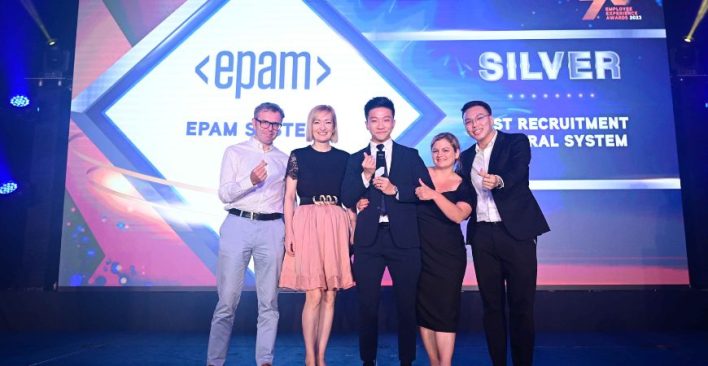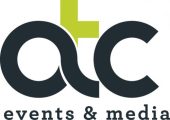Shannon Pritchett on Innovative Sourcing, Leveraging Facebook and Harnessing Creativity

As the Manager of Global Sourcing and Social Media for ManpowerGroup, Shannon Pritchett recognises the challenges many in the industry face to meet their current talent needs. With skills honed early on in the competitive world of contract IT sourcing, Shannon ensured her survival through combining creativity and innovation with scientific techniques and experimentation.
This week Martin Warren talked to Shannon about the challenges in sourcing today, the differences in techniques between the US and Aus/NZ and why the best thing sourcers can do is be open to new ideas.
You can listen to their full chat below.

From Recruiting Swimmers to IT Sourcing
I’ve been doing this [sourcing] for around ten years. I got my start as a swim coach who hired future swimmers for the University I was working at, which lead me to IT sourcing. Around the time, which was 2006-2007, we were very well versed in job boards in the US and LinkedIn was just starting to pick up steam, but was still very unknown. I found that for the positions I was looking for, if I relied on a job board, either someone in my office had already contacted that person or I contacted someone who had already been reached out to the exact same position I was sourcing.
It was a very long, self learning process – as a matter of fact I still myself a student of the industry. I basically had to find more clever and creative ways to find candidates based on survival. It was a full commissioned job and I found that I loved the people that I was working for, I loved the clients that I had, and I just had to be more creative in this position to help a candidate find a job.
So really my skill-set came from a necessity to survive in this industry.
The Big Changes In Sourcing
The Rise of the Candidate
Social media and technology of course are the major changes. We’ve also gotten to a point where, back when the US had a recession, the employer had a lot of power and we could basically pick and choose who you wanted to work for you. We had a list of very well qualified candidates for every single position; as a matter of fact I’d say I had too many qualified candidates! Once the economy started to pick back up to where it is now- well now the candidate has a bigger voice.
The Power of Social
Social media has become extremely powerful. The world has become more savvy with computers, people know how to look up a candidate, people know when positions are open, and people aren’t really as passive as they used to be. Now it’s really important, whether you’re a sourcer or recruiter, or someone in HR and really consider the people you’re working for, and to provide a great experience for them – and that includes sourcing.
Focus on Engagement
No longer can you rely on the automated email, the multiple in mails; all those typical spray and pray tactics. You really have to be genuine and think about the people you are sourcing, try and place yourself in their shoes to really make that meaningful hire. That begins at sourcing right away, it doesn’t start at the recruitment level.
I think if you can craft a unique and personable approach, you’re more likely to have success with that candidate in the long run.
A Blank Canvas: Creative Sourcing Experiments
Sourcing is very creative but also very technical in nature. It’s the science that goes into what you’re producing. The art and the creative part is how you interact with the individual.
I think you should look at every single position and every single new sourcing challenge as a blank canvas. It’s an opportunity to rewrite, to reproduce, to re engage and re attract talent you haven’t had before.
The Future of Sourcing – Where is the Market Going?
The Candidate Experience Matters
We’re finally starting to see the progress when it comes to candidate experience. As I mentioned earlier, I think the voice of candidates needs to be recognised more. The CandE (Candidate Experience) awards are moving to Australia after they’ve had a lot of success in the US and Europe, so that’s firm confirmation for me that candidates are starting to be recognised all over the world.
Moving Away from LinkedIn
Second thing I see is a shift away from LinkedIn and a further reliance on social media sites like Facebook. If you look at the trends of LinkedIn over the years, I think we peaked a couple of years ago. Although it’s a very successful site and one that we should consider important, I think we should look at some of the other sites that we can retrieve even better information from in a larger talent pool.
Being More Data Driven
Lastly, data needs to be taken more seriously. We talk a lot about collecting data and analysing it, but I think now it’s going to become more important than ever to look at the trends over the last couple of years to really make the prediction on what we need to do to become successful.
Opening Recruiters Up To Sourcing With Facebook
Using facebook as a tool is a very common concern. I post pictures of my kids on facbeook, I post pictures of myself, of my animals. I’m seeing more recruiters connect on facebook without us knowing each other than I’ve ever seen before. I would say I have a couple of hundred recruiting industry connections on facebook, which I’m not connected to them at all on Linkedin, and a lot of them I’ve never met.
Why You Should Use Facebook
Recruiters in this industry have always set the tone and set the pace of where we’re going to be next. We were the first on LinkedIn and we’re the predominant users of it, but the average candidate only spends 17 seconds a day on LinkedIn, but they spend over an hour on Facebook. There’s also 1.5 billion people on Facebook who are now adding their employment data, and that’s all searchables. With just a few manipulations you can have access to this information.
How Shannon’s Team Uses Facebook
You won’t be comfortable using it unless you’re open to the ided, but we don’t really send messages or contact people through Facebook very much. What we do is find out where they work, their name and where they live and that pretty much all the information you need to find other ways to contact these candidates without violating their comfort zone.
It’s all up to your comfort level. Back in 2009, Facebook was my number one recruitment tool for high volume entry-level call centre positions. I don’t use it as much as I used to now that I recruit for more professional positions, but it’s starting to pick up steam and starting to be more acceptable. It’s really just trying to extract information from it, trying to retrieve information and using your own creative knowledge to find a more professional way to reach out to them. Whether that’s an email, a cold call- whatever your comfort level is.
How Recruiters can Constantly Develop their Skills
Being the student of the industry constantly allows me to try new things; I never go in with a set mindset. I go in with an open mindset and I’m willing to try something before I buy it. I think one of the hardest things when you’ve seen an advanced sourcing presentation is when you go in with a closed mind and say “oh this only worked here, it’s not going to work for me” or “this isn’t my industry and my candidates won’t like this”. To get the most out of this event isn’t necessarily what I’m showing but what you can take from there and add your own creativity. That’s where you’ll be the most successful.
Leveraging a Global Sourcing Team
I run the global sourcing expert program for ManpowerGroup, and that extension goes to Australia and New Zealand as well as the wider APEC region. What we’ve found is that we can collaborate together to use search engines and social media to our advantage to really find candidate information that they haven’t found before. It’s a key a partnership with Australia and New Zealand that I rely so heavily on and we’re able to share information on a regular basis, and in return I find out about the culture, and a different way of doing things that I wouldn’t have had before. It’s been nice to be able to use the exact same tools, systems that connect us all globally.
The Differences Between Sourcing in the US and Aus/NZ
The US seems to be a little bit more advanced when it comes to pulling a rabbit out of a hat. I always say that I can show you how to pull a rabbit out of a hat, but sometimes it doesn’t mean I’m ‘pulling a rabbit out of a hat’ – it’s an illusion. What I like about Australia is that the talent is just as in demand as anywhere in the world, we can see that from different data reports that we run through our company.
Different Tools
The main difference is that the technique and tools that we use in the US varies greatly to what is used in Australia. We have 45 countries involved with one project we’re working on so I will be sharing some of my tricks and tips.
Join Shannon, Chris Hoyt, Bill Boorman, Martin Warren and other leading sourcers and social recruiters at Sourcing.Social.Talent #SST15 in November. Register now for the event in Sydney, Melbourne or Auckland
Related articles
Leave a Reply
Sign up to our newsletter
Get a weekly digest on the latest in Talent Acquisition.
Deliver this goodness to my inbox!


